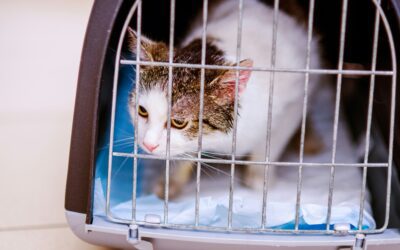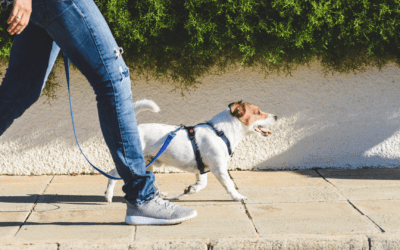Hill & Harbour Veterinary Center Blogs
We love educating our clients, that’s why we have curated and shared posts filled with helpful information regarding pet care.
Veterinary Blog
2-Way Chat Saves the Day
Do you ever wish that chatting with our veterinary team was as easy as texting a friend? With our hospital’s app, it can be! 2-Way Chat is one of our app’s most convenient features. We love that communicating with our clients, and keeping up with...
Nurturing Feline Wellness: A Guide to Stress-Free Veterinary Visits for You and Your Cat
Nurturing Feline Wellness: A Guide to Stress-Free Veterinary Visits for You and Your Cat Caring for our feline companions involves more than just providing food and a cozy bed. Regular veterinary check-ups are essential for ensuring their overall...
National Walk Your Dog Day: 6 Tips for a Safe and Mentally Stimulating Walk for Your Do
National Walk Your Dog Day: 6 Tips for a Safe and Mentally Stimulating Walk for Your DoNational Walk Your Dog Day is just around the corner, and it's the perfect opportunity to celebrate the connection you share with your furry friends by taking...
Unleash the Smile: February is National Dental Health Month!
Unleash the Smile: February is National Dental Health Month!Welcome to February, pet lovers! Did you know that this month is dedicated to raising awareness about the dental health of our furry friends? Just like humans, pets can suffer from dental...
January is National Train Your Dog Month
Celebrate National Train Your Dog Month with These 5 Tips As we welcome the new year, January marks a special occasion for all dog enthusiasts – National Train Your Dog Month! This annual celebration was established in 2010 by the Association of...
New Year, New Pet
4 Ways to Keep Your New Pet Healthy and Safe in the New YearBringing a new pet into your home is an exciting and rewarding experience, but it also comes with a great deal of responsibility. As a new pet owner, it's crucial to prioritize your furry...
Ensuring a Safe and Calm Christmas: Travel Tips for Pet Owners
The festive season is upon us and, as we gear up for the holidays, it's important not to forget our beloved four-legged family members. Holiday travel can be stressful for pets, but with a little planning and consideration, you can make the journey...
Ensuring a Pawsitively Safe Holiday Season for Your Furry Friends
The holiday season is a time for joy, celebration, and spending quality moments with loved ones—including our four-legged family members. While the festivities can be delightful for us, they can present certain risks to our pets. Therefore, we want...
Benefits of a Wellness Plan
Explore the numerous benefits of having a wellness plan for your beloved pet As pet owners, we consider our furry companions as cherished members of our family. Just like humans, pets also require regular healthcare to ensure their overall...
Best Places to Hike
Exploring Nature’s Trails: The Best Places to Hike with Your Dog in New England New England boasts a wealth of natural beauty, making it an ideal destination for outdoor enthusiasts and their four-legged companions. With stunning landscapes,...
Heartworm Disease
April is Heartworm Disease Awareness Month. Is Your Pet Protected? Heartworm disease is a serious and potentially fatal condition that affects pets, particularly dogs and cats. However, it is nearly 100% preventable! This disease is caused by a...











